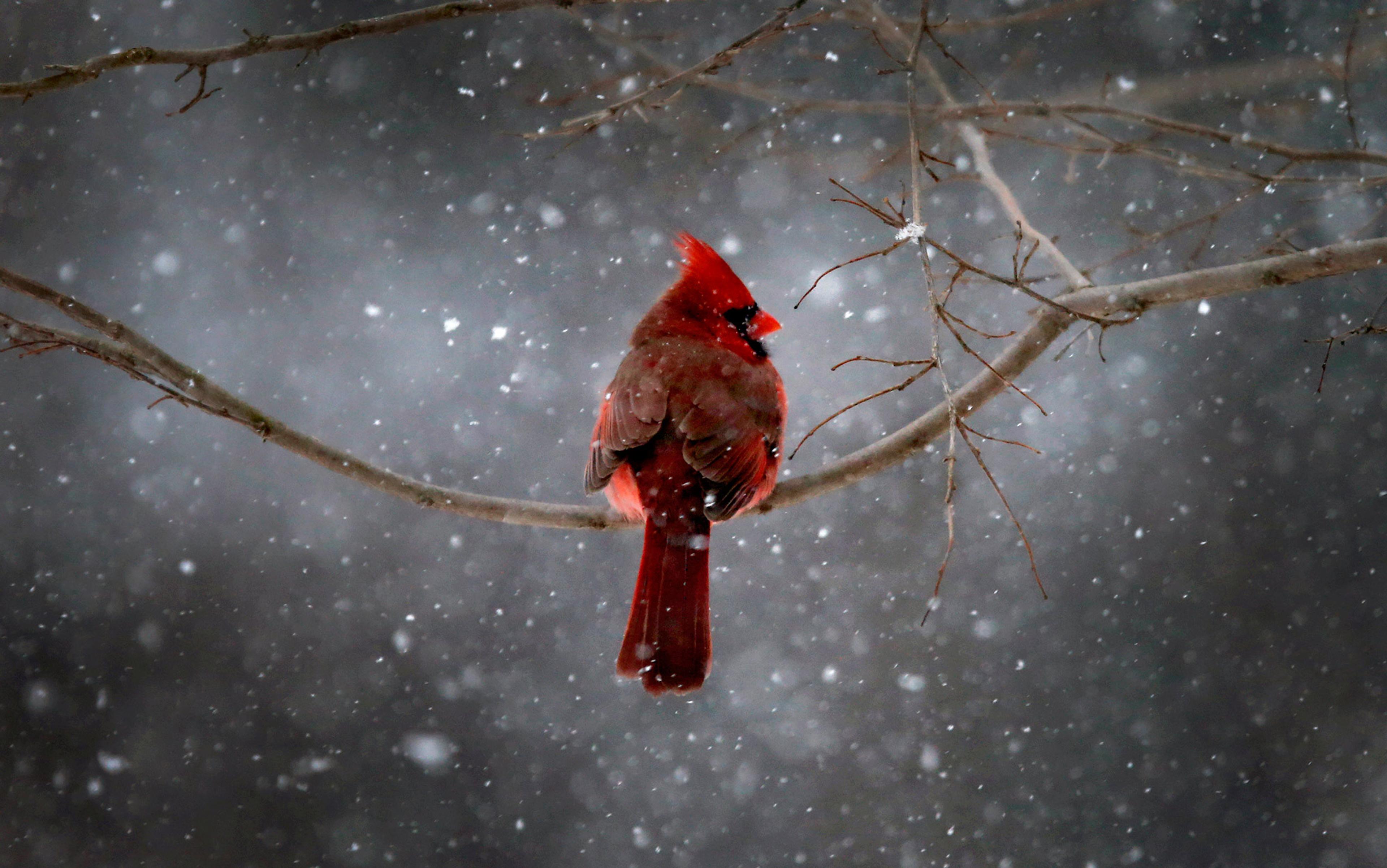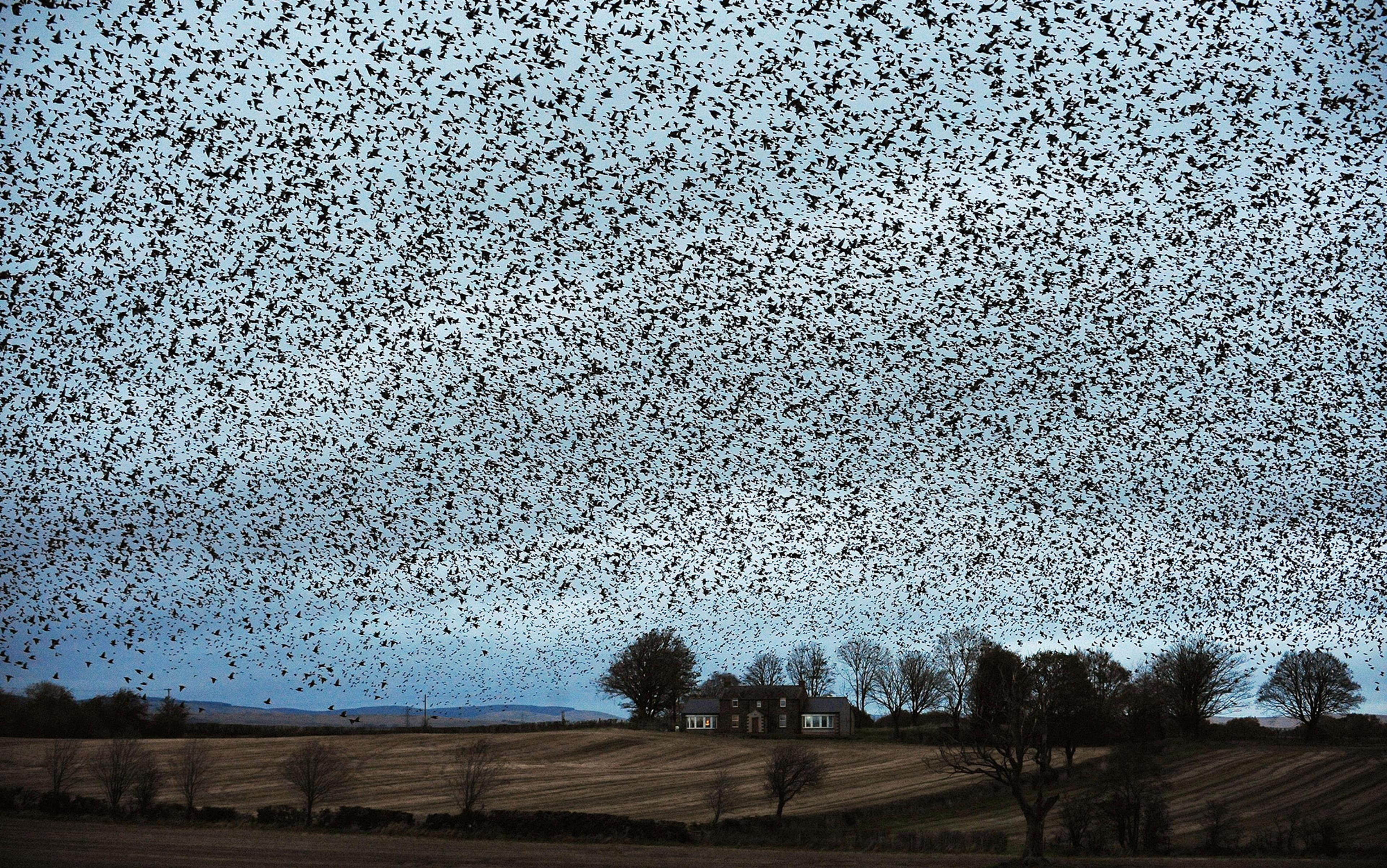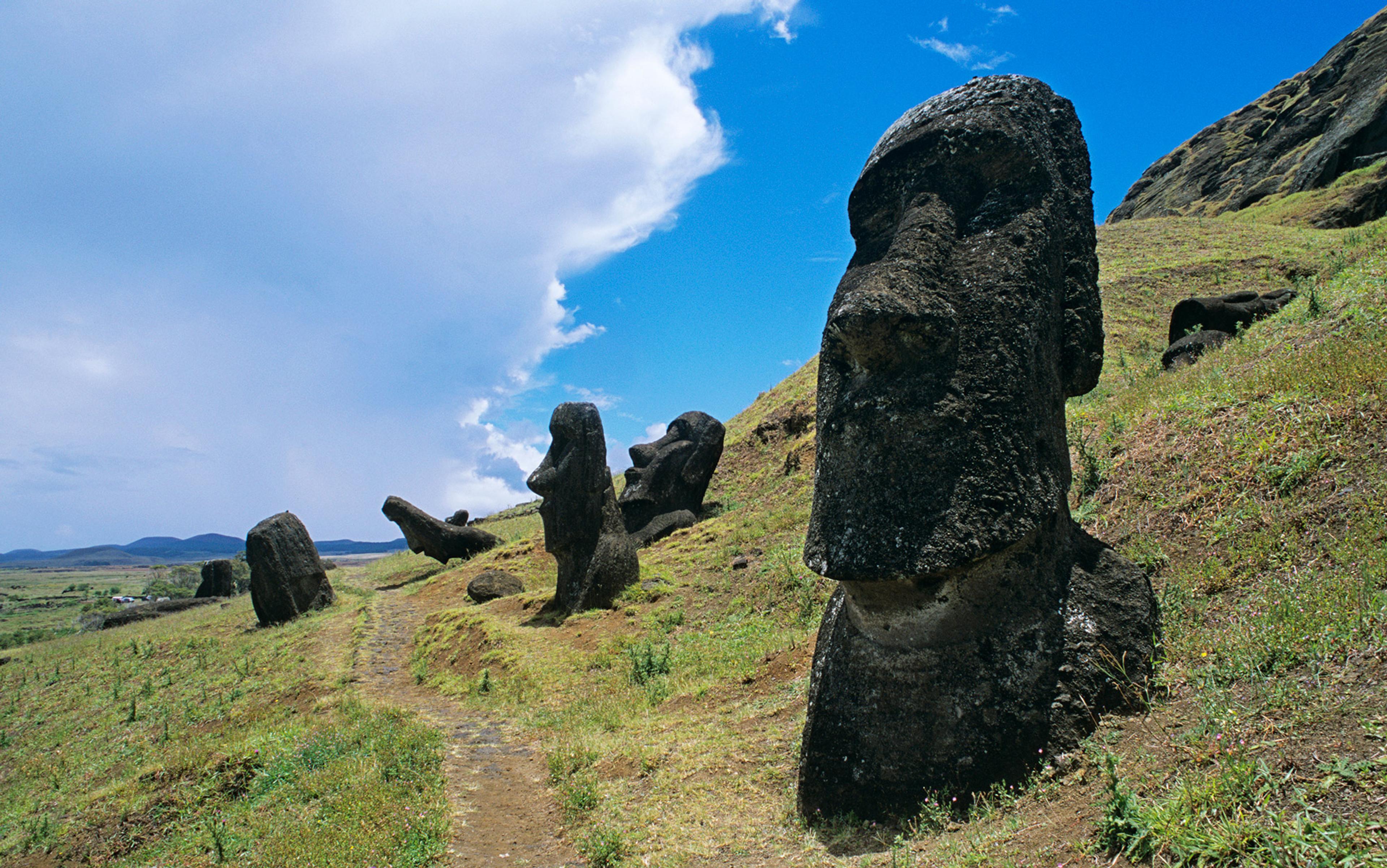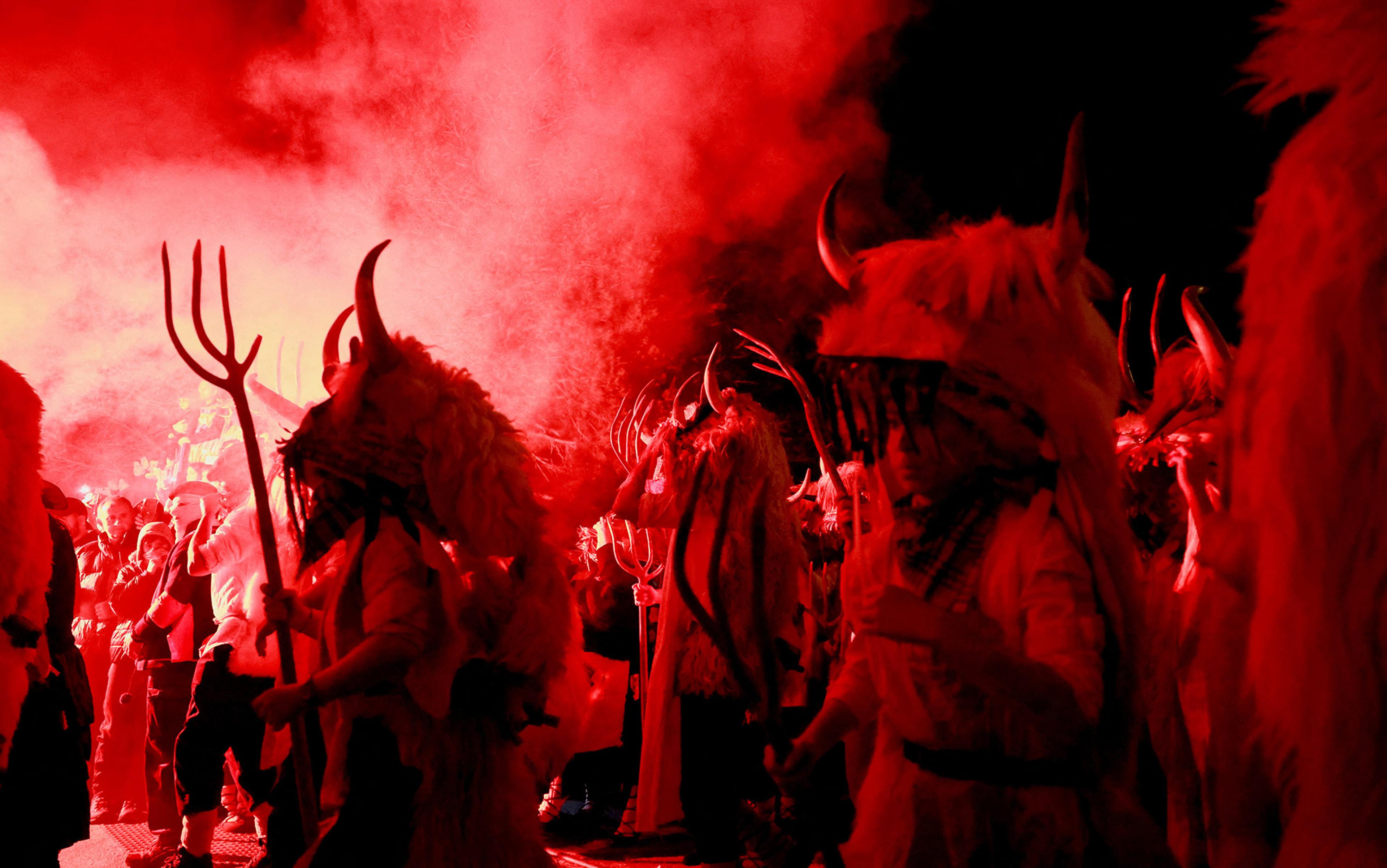In the first weeks and months after my daughter’s birth, it seemed like there were nests all over. They were in hedgerows, under rocks, at the tops of trees. In the garden, a clutch of bright, lemony eggs lay in the crease of a rotting tree branch; beside it, two blackbirds skittered twigs into a hawthorn bush. We see everywhere the thing that is constantly on our mind, I suppose, and in that first phase of motherhood I became peculiarly alert to the means by which creatures carve out their dwelling places, their nooks and niches.
In the animal world, few behaviours are as widespread or as diverse as nesting. For many species, it marks a crucial phase in the reproductive cycle; the difference between a new generation surviving or not. I had tended to think of nests as closed, finite spaces – places of nurture and stasis, confined to the immediate. But, I was realising, even the most simple structures involve careful adaptations, tailored to the needs of a species’ offspring, and tuned to what potentials and parameters exist at large in the environment.

Photo by Timo Kirkkala/Flickr
My daughter was born at the start of the COVID-19 lockdown – that strange, and strangely clarified, spring. I used to sit on the garden bench to nurse her, watching the blackbirds darting from the hawthorn, now seeking worms in place of twigs. Soon their nest had all but disappeared behind the new spring growth. Still, if I listened, I could just hear the chicks inside – urgent, I thought, and uncompromising; steadfast in their need.
To nest is to fit one object, or piece of information, inside another. A nest of tables. A nested text. It is about neatness and snugness. My daughter had once fitted snugly inside me; now she pulled at my breasts and kicked at the loose flesh of my stomach, as though testing to see what I was made of. Unapologetically, she required me – required that I remain with her, supplying a sufficiency of safety and security and comfort.

Guillemot eggs. Photo by Tim Sheerman/Flickr
Not all species build nests, but there are nest-builders across almost every animal group. Many birds and some mammals, reptiles, fish, amphibians, insects and arachnids form structures to protect eggs or young offspring, to store food or provide themselves with shelter – and across these groups, and within them, both nests and nesting strategies vary enormously. The tailorbird stitches leaves with hair-like plant fibres to build its nest. Weaver birds weave them. The sociable weaver crafts a vast communal nest that might house more than 100 breeding pairs, across multiple generations. For others, the task is less onerous. Plovers, ground-nesting birds, form a shallow scrape on bare earth, and line it with pebbles or vegetation. The guillemot makes no structure at all – she lays her eggs on stony ledges, in large and crowded colonies. The eggs are conical in shape, meaning they roll around, not along; an evolutionary quirk that in the absence of any surrounding support makes them less likely to fall off.
The male scrapes together a mound of dead leaves, which incubates the eggs through the heat of decomposition
Nests are not necessarily elaborate, then – and, despite the persistence of gendered assumptions about what is ‘natural’ when it comes to motherhood, the task doesn’t always fall to the female. Most bird species parent in couples, with both partners taking part in nest-building and raising chicks. The tungara frog creates a nest by whipping up the fluid released when the female ejects her unfertilised eggs; both partners pump their back legs to generate a foam that keeps the eggs moist and oxygenated, and out of sight of predators.
For the surinam toad, the ‘nest’ in which tadpoles develop is indistinguishable from the mother’s body – once the male has fertilised the eggs, he lifts them onto her back, where a thin film of skin grows over the top, creating honeycomb-like pockets that the small toadlets break through when they emerge. The cuckoo follows a rather different line of tack. She circumvents the labour of raising offspring altogether by laying her eggs in others’ nests – a rare phenomenon known as brood parasitism that extends to other groups, from cuckoo catfish to a small number of wasp species. For the malleefowl, the nest itself functions almost as a surrogate parent. The male scrapes together a mound of dead leaves, which incubates the eggs through the heat generated by the process of decomposition. Once hatched, chicks will dig themselves out and make a dash for nearby undergrowth without ever seeing their parents.
At home, inside, a clutch of spider’s eggs hung suspended above the shower; in the front room, a colony of ants sprang from a crack in the skirting boards – their labour hidden, and busy. Underground ant nests possess a subterranean architecture, invisible from the crevice entrances we see. Chambers and passageways, sloping ramps and tunnels through which the colony maintains a steady temperature and humidity. It’s a mode of existence that nurtures more than just the ants themselves. Tunnels improve soil drainage and aeration, and as fresh organic matter is pulled underground it benefits the surrounding environment too. The nests were skilled – fine tuned and clever. They existed, I saw now, as part of a wider ecology – they were bound up in the world beyond them. Which had me thinking. What kind of nest was I making? What kind of nest did I want to build?
On Mondays, the baby woke to the sound of the dustbin lorry. Still shaking off my dream world, I’d hold her to the window to see the flashing lights, the great masticating machinery, the men who smiled and waved as she flapped her little hands and bobbed her head, her mouth popping like a fish. Bags and bags of it. Nappies, broken toys, empty food containers, sanitary pads and plastic packets and God knows what else. Watching it go, I’d imagine it spreading – into landfill, into nests, into maternal bodies, and their offspring.

Photo by Frans Lemmens/Alamy
The generalist approach of many bird species means they’ve adapted well to increasingly anthropogenic environments, finding new nesting sites in human-made structures, and making use of manufactured materials. Blue tits have been found nesting in traffic cones; seagulls on satellite dishes; eagles atop mobile phone masts. So too with nesting materials, where dissections of urban nests have revealed plant seeds and mosses swapped for insulation materials and polyester; dry leaves for plastic and paper bags; sticks for plastic straws; thorny branches for anti-bird spikes. The birds are clever – master improvisers – but the incorporation of synthetic materials also changes a nest’s features. It might drain rainwater less effectively, or more so; it might have a different capacity to absorb or retain heat, or be more conspicuous to predators. Since bird nests are built with the twin aims of providing incubation and protection, these aspects matter. Too warm or too cold, and embryonic development may be disrupted; too visible, and the nest may be more vulnerable to predators.
Novel materials appear so fast, they haven’t yet evolved to distinguish between what is toxic and what is safe
In some cases, these substitutions extend to the means by which birds are defending themselves against nest-dwelling mites. In the wild, house finches self-medicate against mites and ticks by collecting plants that actively repel them; in cities, they’ve begun replacing this plant matter with used cigarette butts, since nicotine works as a repellent. Yet the cigarettes are also genotoxic, meaning that, while butts have been shown to improve chick-hatching, fledging success and immune response in the short term, the whole family is contaminated with substances that do long-term damage. The birds are masterful, but they’re also vulnerable, and novel materials are appearing so fast that they haven’t yet evolved to distinguish between what is toxic and what is safe.
Here, it seemed, lay the difficult bind of motherhood; tasked with protecting our offspring, we find ourselves faced with an increasingly unstable and mixed-up world.

An albatross and chick inspect discarded lighters in Papahānaumokuākea Marine National Monument. Photo by David Slater/NOAA/Flickr
Do an internet search for anthropogenic nesting materials, and one quickly comes across images of entanglement. Seabirds caught in fishing lines; plastic string wound around matted necks; crooked feet ensnared by brightly coloured wires. They make me nervous, these bodies, strangled or ensnared by their own shelters – by objects that have flowed, unimpeded, through my home. And it isn’t just seabirds. Clicking away one day, I came across a curious story: on coastlines across the world, tiny marine creatures have been found chewing up polystyrene floats, causing damage to floating docks. The creatures are marine boring isopods, and they look a little like terrestrial woodlice. For some species, the boring is a form of nest-making; inside the burrows, they’ll be laying eggs and raising their young. But since boring into the floats involves breaking them up, these minute crustaceans are also inadvertently creating a new tide of microplastics – they’ve become at once the passive victims and the active generators of this most pervasive form of waste.
Things begin folding, I’ve found, when you look at nests too long. Benevolence and harm, vulnerability and threat, what is natural and what is not.
Perhaps the task lay not in how to disappear us both, but whether I could build a more clear-eyed sense of the world
One morning at home, pulling a bright shirt from the wardrobe, a moth flicked up from between the sleeves, leaving its larvae to gnaw ragged holes through fabric that I could not rid of the stench of my own milk. I shook the shirt. Nothing fell. The moth – the mother, the moth – pressed herself flat against the wall. Had she any intimation of what befell the cloth after her larvae hatched? Did she know the damage caused? As I pulled on the shirt and as the baby blew raspberries from the bed, I recalled this: the common newt wraps her eggs in folded pond leaves; the burrowing bug Sehirus cinctus cinctus deposits hers in a dip, a small depression in the soil. Was it possible to make a nest of nothing at all – a nest that leaves no trace?

The egg of a common newt. Courtesy Wikipedia
Perhaps not. And perhaps, in any case, that wasn’t the point. I was raising a child, an agent in the next generation – perhaps the task lay not in how to disappear us both, but whether I could build a more clear-eyed sense of the world and my place in it. What if the nest was not a house but a landscape? What if the nest was the world?
Think nest, and I used to think fixity – but we live in changing times, and these days it may be that different qualities are needed to parent well. Indeed, in the animal kingdom, the extent to which mothering creatures are able to adapt (rather than remain steady and unchanging) may be a key factor in determining which species survive into the future. Many reptiles dig pits to lay their eggs, and rely on ambient heat for incubation. Some use incubation temperature in a more specific way, to determine the sex of their offspring – a strategy that, in a warming world, is vulnerable to disruption. Green turtle eggs buried in warmer sand develop into females; in cooler sand, they grow into males. Currently, the population as a whole is tipping towards females – on present trends, it’s estimated that by 2030 just 2.4 per cent will be male. Green turtles can live for 70 years or more; they aren’t reproducing quickly enough to select for adaptations that might protect them from the effects of climate change.
Sometimes the adjustments made by parenting creatures are surprising – and surprisingly varied. Under increasingly unpredictable and extreme weather conditions, some usually monogamous female birds are mating with multiple partners, and terminating bonds with males that no longer yield sufficient benefits. Others, either through selection or behavioural plasticity, are ramping up parental care as a buffer against the harsher effects of climate change (though it’s worth noting that a similar phenomenon has been observed under unusually stable conditions; crises are not the only precursor of exceptional care). With warmer springs, seasonal cues are changing, and some species are breeding earlier, which can increase population numbers overall. The elusive purple emperor butterfly is emerging two or three weeks earlier than a few decades ago, and mating earlier too; early breeding among red deer on the Isle of Rum in Scotland has led to females having more offspring over the course of their lifetime.
Through the corrosive action of their own faeces, bats create a complex topography on cave walls
Many reptiles, too, show a high degree of behavioural plasticity when it comes to breeding, altering the timing, location and structure of their nests to increase the likelihood of offspring survival. In warmer temperatures, the eastern three-lined skink is laying earlier in the season; the Australian water dragon nests in shadier locations. Some researchers believe that crocodiles’ ability to survive mass extinctions may be due in part to their particularly hands-on and flexible approach to nesting: in warmer temperatures, they bury deeper.
Yet a shift in the timing or location of reproduction can also mean that the delicate link between mating and the availability of food or nesting sites is lost, and for this reason specialist species such as the Alcon blue butterfly, who must lay her eggs on the leaves of the marsh gentian plant, are particularly vulnerable.
To build a nest is to be alert to weather and climate; to potential threats; to what resources are available in one’s environment. It is to consider matters of safety and reliability, sturdiness and structure. Perhaps, just as my daughter kicked and yelled as a newborn, demanding safety and nurture, it is also about testing the edges of a space, teasing its limits – bringing a careful attention to our environments, and how we inhabit them, and learning how to demand a world that is safe and hospitable to all.
Nests, after all, are powerful. Think (for better or worse) of those boring isopods, breaking things up. There are also communal bat roosts where, through the corrosive action of their own faeces, inhabitants create a complex topography of ripples and bell-holes on the interior surfaces of cave walls; there are European bee-eater birds drilling holes into empty rock faces that later become home to dozens of other species, from rodents and insects to other birds. There are seabird colonies bringing marine nutrients to barren landscapes, creating opportunities for new flora to become established; there are burrowing beetles tugging carrion into underground nests, speeding decomposition on the forest floor and creating nutrient hotspots in the soil.
Not long ago, my daughter and I took a train to the city. We walked from the station – Don’t step on the cracks, don’t step on the cracks! – full of elation at having escaped the house, everything about the place a novelty. Soon we reached a bridge overlooking the river; the water below ran smooth and straight. Look! she shouted, stuffing her head between the iron railings. Look, a shopping trolley!
Yes, a shopping trolley, looking strangely debased with its wheels in the air, tossed upside down in the water. And around it, a collection of plastic bottles and old drinks cans circled by a strand of river weed. Urban rivers are among the most anthropogenically modified landscapes on Earth; channelisation, dredging, bank stabilisation and pollution have created smooth, fast-flowing currents largely inhospitable to aquatic life. Yet, even in these damaged and degraded places, opportunities for wildlife recovery have emerged, in the form of human litter. Bottles, broken plastic and supermarket trolleys introduce variation in otherwise homogenised environments; while smaller items offer new surfaces and textures, larger items can impede the river’s current, altering its flow. A trolley might function as a large rock or a fallen tree would, encouraging the deposition of fine sediment and organic matter where plants can find a niche. Aquatic macroinvertebrates are known to readily colonise smaller pieces of litter with empty interiors or rough surfaces, particularly in places with sandy, unstable substrates. This facilitates the creation of distinct communities; more biodiversity has been found in bricks with holes and grooves dumped into rivers than in the rocks that would naturally reside there.
Together, from the bridge, we watched the water flow. Piece by piece, I recalled these things that I had learned, and fitted them into the picture below us. In and around the trolley, I imagined sediment deposited, particles of soil and small plant roots accumulating; further species joining that had not been drawn by the litter itself. And, as I looked, I felt a kind of hope. Nesters can be wild improvisers, capable of changing things even in unlikely places. Life moves, and keeps on moving – keeps looking for somewhere to root.






